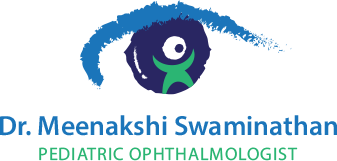Fair and lovely and yet….
Last week in the clinic, I met a lovely family. They had travelled a long way to seek advice for their 6-year-old daughter. What struck me as the child walked in was that she was much fairer skinned than both her parents. She also had light brown eyes. When I asked her to read the vision chart, she turned her face to one side and started reading slowly. She could only read the first 3 lines despite wearing prescription glasses. When I examined her closely, I found her eyes were oscillating rhythmically. She had nystagmus.
This child has a condition called oculocutaneous albinism. There is less pigment called melanin in many parts of the body. These children often present with photophobia or difficulty facing even normal lights due to less pigment in the layers of the eye. Their eyes also show presence of nystagmus, a rhythmic oscillation, which can degrade the quality of vision. Children may adopt a compensatory head posture, turning their face, tilting their chin up or down or tilting their head to one side to put the object of interest on the null point, the point which gives them better vision. The fovea or the very central portion of the retina is often poorly developed, and this is believed to be the cause of the nystagmus.
…it is important to ensure that children with albinism wear sun protection in the form of long-sleeved clothes and wear a sunscreen lotion with an SPF of 30 or more.
Children with oculocutaneous albinism or ocular albinism (in which only the eyes are affected by the reduced pigment, can be helped in many ways. A proper eye examination, with correction of refractive error is often the first step. These children may need a tint in their spectacles to help with even ambient light or outdoors. They will need support in school, with special seating and adjustment when participating in sports. Those with even poorer vision can benefit from examination for fitting with low vision aids and referral to schools with assistance for the partially sighted.
Correction of their head posture through surgery on their eyes can be life changing for these children. Surgery can not only improve their functioning but also have important social implications.
And finally, it is important to ensure that children with albinism wear sun protection in the form of long-sleeved clothes and wear a sunscreen lotion with an SPF of 30 or more. They should take guidance from dermatologist. Sun related damage including skin cancer prevention needs to be kept in mind throughout their lives. These children can also have a predilection to develop frequent infections or excessive bleeding if the albinism is part of a syndrome. It is the ophthalmologist role to ask for these symptoms while examining the child.



